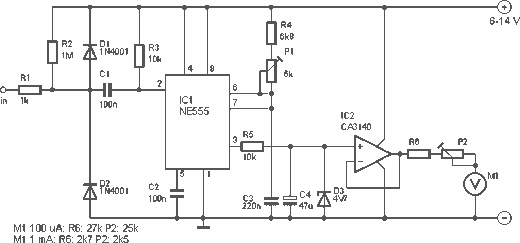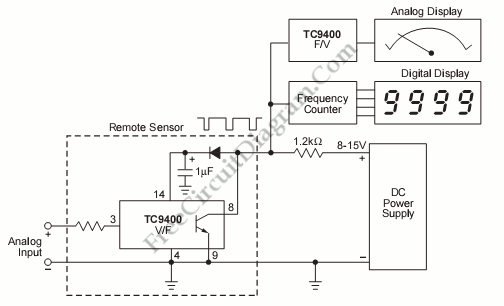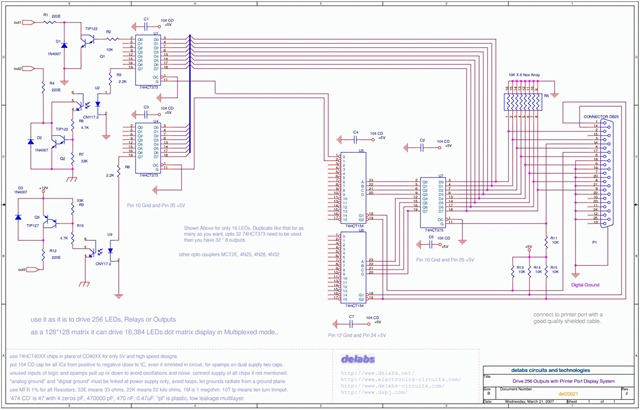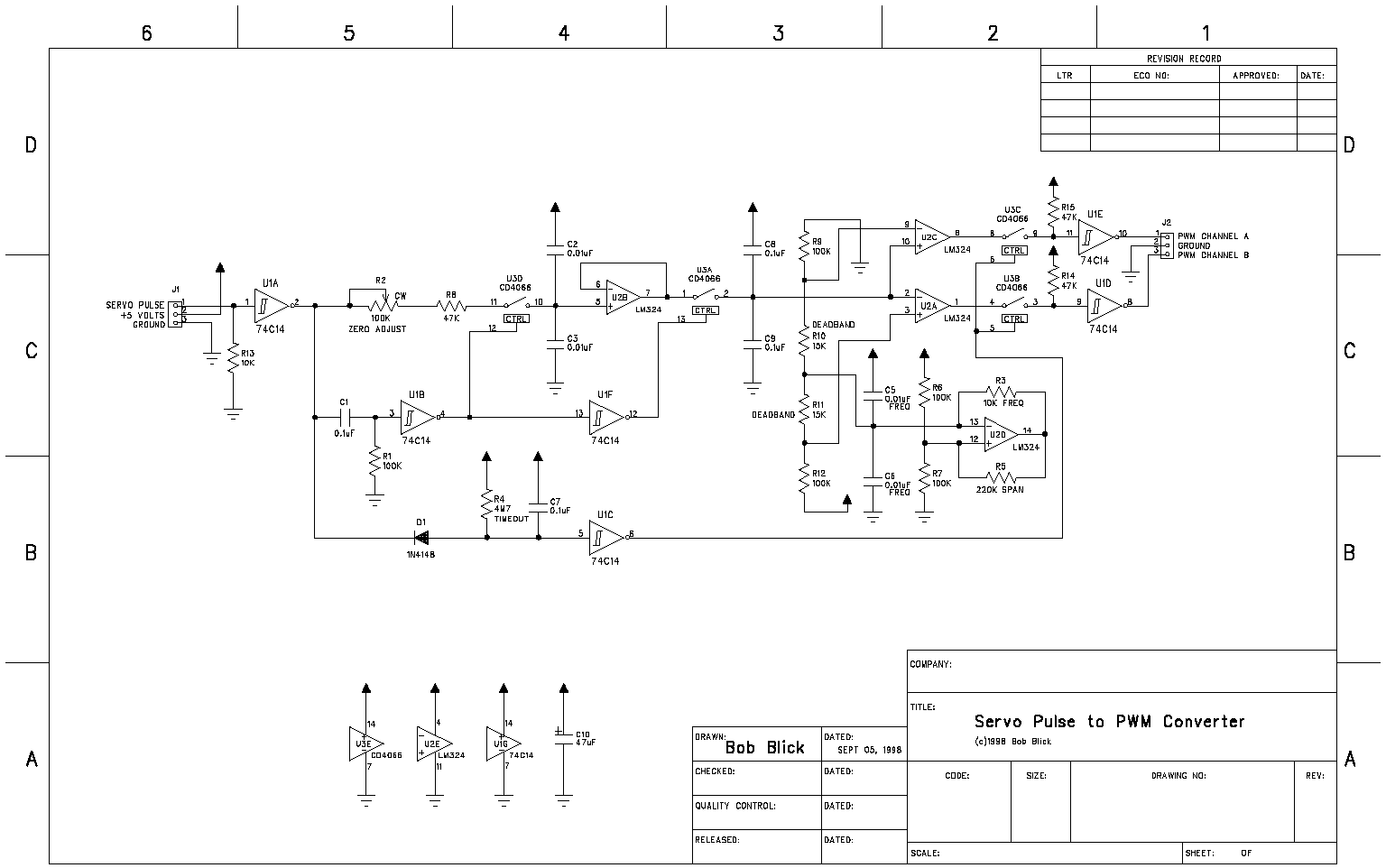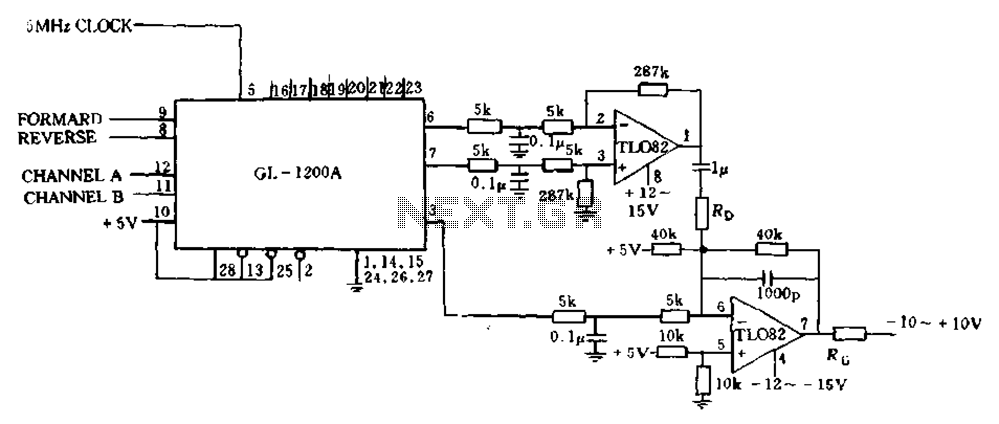
Analog PWM connection with FIG zps-101 interface
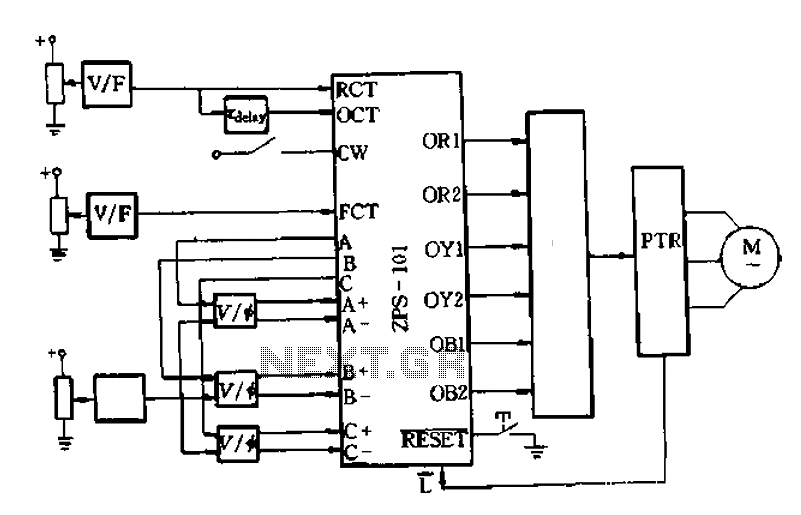
An AC-DC-AC circuit utilizes a power transistor as a switching device with analog control, as recommended in the wiring diagram of Figure 6-10. This circuit generates a voltage-controlled oscillator (VCO) using OCT and FCT, with RCT available for OCT delay. Monostable and RC circuits may be employed at this stage for pressure adjustments. It is advised not to use the VCT produced by the FCT. The circuit generates a three-phase square wave (a, B, C), which extends into a six-phase square wave with delayed triggers: +a, -B, +B, +C, and so forth. This allows for the selection of various circuits, such as the phase-shift trigger KJ009. Phase shift control voltage can achieve a 180-degree difference between two phase-shifting pulses. The voltage signal must be regulated according to the frequency of the function generator to ensure proper synchronization adjustment.
An AC-DC-AC circuit operates by converting alternating current (AC) to direct current (DC) and then back to AC, utilizing a power transistor as a key switching element. The schematic design, as outlined in Figure 6-10, incorporates analog control to facilitate precise voltage regulation. The circuit's primary function is to generate a voltage-controlled oscillator (VCO), which is integral for applications requiring frequency modulation.
The use of OCT (Operational Control Transistor) and FCT (Frequency Control Transistor) allows for the generation of oscillations at desired frequencies, while RCT (Resistor Control Transistor) can introduce delays in the OCT output, enhancing the circuit's adaptability. Additionally, the incorporation of monostable and RC (Resistor-Capacitor) circuits provides the capability for fine-tuning pressure adjustments, which can be critical in applications such as motor control or signal processing.
In this configuration, the circuit produces a three-phase square wave output (labeled a, B, C) that can be further extended into a six-phase square wave format. The delayed triggering mechanism generates specific phase relationships among the outputs, represented as +a, -B, +B, +C, etc. This flexibility allows for the integration of various circuit designs, including the phase-shift trigger KJ009, which can modulate the phase shift control voltage effectively.
The phase-shifting capability is crucial, as it provides a means to achieve a 180-degree phase difference between two pulse outputs. This feature is essential in applications requiring synchronized operations, such as in three-phase motor drives or in systems where precise timing is necessary. The voltage signals generated must be carefully regulated according to the operational frequency of the function generator, ensuring that the entire system remains in synchronization and operates efficiently. Proper synchronization is vital for maintaining the integrity of the output signals and ensuring that the circuit performs as intended across varying operational conditions.AC-DC-AC circuit when the power transistor as a switching device with analog control if built according to Figure 6-10 recommended wiring. Generating a voltage controlled oscil lator OCT and FCT, RCT available OCT delay ., (with monostable and RC circuits may be) can be obtained at this time for adjusting the pressure, do not use the VCT, which is produced by using the FCT Three-phase square wave a, B, C forming the extension of the six-phase square wave a delayed triggered +, a, B-, B, c +, C and then into the can. This could be the choice of any circuit, such as phase-shift trigger KJ009. with phase shift control voltage, each piece can be obtained 180. the difference between the two phase shifting pulse, voltage signal shall be approved by the regulator according to the frequency of the function generator needs access to synchronization adjustment.
An AC-DC-AC circuit operates by converting alternating current (AC) to direct current (DC) and then back to AC, utilizing a power transistor as a key switching element. The schematic design, as outlined in Figure 6-10, incorporates analog control to facilitate precise voltage regulation. The circuit's primary function is to generate a voltage-controlled oscillator (VCO), which is integral for applications requiring frequency modulation.
The use of OCT (Operational Control Transistor) and FCT (Frequency Control Transistor) allows for the generation of oscillations at desired frequencies, while RCT (Resistor Control Transistor) can introduce delays in the OCT output, enhancing the circuit's adaptability. Additionally, the incorporation of monostable and RC (Resistor-Capacitor) circuits provides the capability for fine-tuning pressure adjustments, which can be critical in applications such as motor control or signal processing.
In this configuration, the circuit produces a three-phase square wave output (labeled a, B, C) that can be further extended into a six-phase square wave format. The delayed triggering mechanism generates specific phase relationships among the outputs, represented as +a, -B, +B, +C, etc. This flexibility allows for the integration of various circuit designs, including the phase-shift trigger KJ009, which can modulate the phase shift control voltage effectively.
The phase-shifting capability is crucial, as it provides a means to achieve a 180-degree phase difference between two pulse outputs. This feature is essential in applications requiring synchronized operations, such as in three-phase motor drives or in systems where precise timing is necessary. The voltage signals generated must be carefully regulated according to the operational frequency of the function generator, ensuring that the entire system remains in synchronization and operates efficiently. Proper synchronization is vital for maintaining the integrity of the output signals and ensuring that the circuit performs as intended across varying operational conditions.AC-DC-AC circuit when the power transistor as a switching device with analog control if built according to Figure 6-10 recommended wiring. Generating a voltage controlled oscil lator OCT and FCT, RCT available OCT delay ., (with monostable and RC circuits may be) can be obtained at this time for adjusting the pressure, do not use the VCT, which is produced by using the FCT Three-phase square wave a, B, C forming the extension of the six-phase square wave a delayed triggered +, a, B-, B, c +, C and then into the can. This could be the choice of any circuit, such as phase-shift trigger KJ009. with phase shift control voltage, each piece can be obtained 180. the difference between the two phase shifting pulse, voltage signal shall be approved by the regulator according to the frequency of the function generator needs access to synchronization adjustment.
